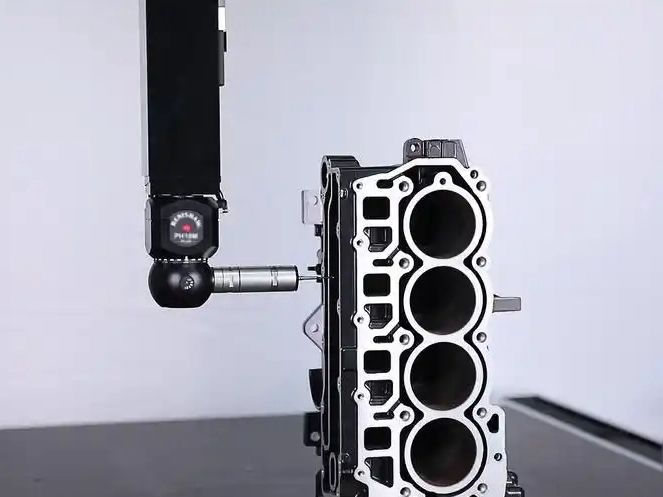Stringent Quality Control to Ensure Consistency in Mass Production
Introduction
Consistency is the cornerstone of successful mass production. As volumes scale into the tens or hundreds of thousands, even minor variations can lead to performance failures, costly recalls, and customer dissatisfaction. That’s why stringent quality control (QC) is not just a value-added service—it's a non-negotiable part of modern manufacturing.
At Neway, we implement comprehensive, data-driven quality control systems across die casting, CNC machining, and post-processing to ensure every part meets exacting specifications, regardless of batch size or complexity.
Why Quality Control is Critical in Mass Production
In high-volume manufacturing, defects scale as fast as output. A deviation of just 0.05 mm across 50,000 parts could result in tens of thousands of rejected components.
Key risks mitigated by strong QC include:
Dimensional deviation affecting fit and function
Surface defects such as porosity, flash, or pitting
Material inconsistencies leading to premature failure
Process drift in long production cycles
Improper post-processing (e.g., coating adhesion, thread fit)
By detecting and correcting these early, manufacturers can maintain productivity, reduce rework, and protect end-user trust.
Our Approach to Quality Control
Neway’s quality control framework is embedded in every stage of the manufacturing process. It includes:
1. Pre-Production Quality Planning
Design for Manufacturability (DFM) review with dimensional stack-up analysis
Tooling and fixture validation
Sample Approval (FAI) and PPAP documentation for critical parts
Material certification with traceability (e.g., A380, Zamak 5, C18200)
2. In-Process Control (IPQC)
In-line checks every 10–30 pieces, depending on criticality
Real-time SPC (Statistical Process Control) monitoring
Go/no-go gauges, dial indicators, and optical measurement
Machine alarms for tool wear, thermal deviation, and parameter shifts
For example, in high-speed CNC operations, we track tool offset variation with tolerance thresholds of ±0.002 mm, automatically adjusting to maintain quality within limits.
3. Post-Processing Inspection
Post-machining, casting, and surface treatment are followed by:
100% visual inspection under standardized lighting
Surface finish validation (Ra < 3.2 µm standard; Ra 0.8 µm for precision surfaces)
Coating thickness testing (powder: 60–80 µm; anodizing: 10–25 µm)
Fit and function checks for threaded features, mating surfaces, and assemblies
4. Final Quality Assurance
Before packaging and shipment:
CMM (Coordinate Measuring Machine) verification of key dimensions
Leak testing for enclosed parts (up to 10 bar)
Functional tests (e.g., electrical continuity, mechanical motion)
Labeling, serialization, and full batch traceability
Real-Time Quality Tracking and Documentation
Our MES (Manufacturing Execution System) enables:
Real-time defect tracking by workstation and operator
Batch history logs linked to serial numbers or lot codes
Automated quality alerts and corrective action workflows
Exportable QA reports and inspection data for customers
All documentation can be shared upon request and formatted to meet industry standards such as ISO 9001, IATF 16949, or AS9102.
Case Example: Zero-Defect Policy for EV Component Production
A leading EV supplier required 300,000 aluminum sensor housings annually with <0.2% defect tolerance. Using A380 aluminum die casting and 5-axis CNC finish machining, we implemented:
Inline vision systems for flash and misalignment
Automated bore gauge validation for ±0.01 mm concentricity
Weekly destructive sample testing and metallographic analysis
Over 12 months, the defect rate averaged 0.06%, exceeding expectations and reducing customer QA time by 40%.
Benefits of a Strong Quality Control Program
Benefit | Description |
|---|---|
Dimensional consistency | Parts stay within ±0.005–0.01 mm range even in high-volume runs |
Lower scrap and rework | Reduces waste by catching process drift early |
Certification readiness | Prepares parts for use in aerospace, medical, or automotive sectors |
Traceable compliance | All data linked to batch, lot, and material certificates |
Brand and reputation protection | Delivers defect-free products to market with confidence |
Technologies and Tools Used
CMMs with micron-level precision
3D scanning for comparative geometry verification
Hardness testers, coating thickness meters, roughness testers
Vision systems with AI-driven detection of flash, cracks, or deformation
Digital SPC dashboards with automatic trend alerts
Conclusion
Quality isn’t an afterthought in mass production—it’s a system. At Neway, we embed quality control into every process to guarantee that every component meets your performance, safety, and consistency expectations.
From raw material verification to final CMM inspection, our comprehensive QC framework is designed to support the highest industry standards while keeping costs down and lead times short.
FAQs
What dimensional tolerances can Neway guarantee in mass production?
How is quality monitored during large-scale CNC machining?
What inspection methods are used for die cast surfaces?
Can customers receive quality reports and batch traceability documents?
What industry certifications support Neway’s QC processes?

